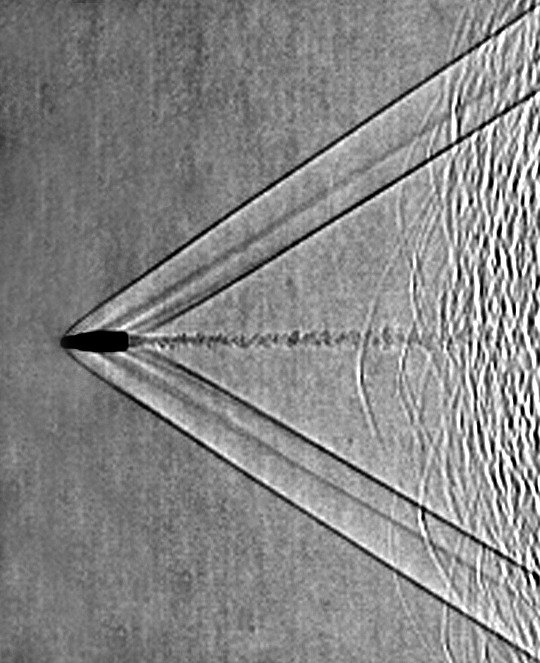
It's not often I talk about long range shooting in the real world; people tend to get the wrong idea, get judgy, and tend to throw the 'S' word around which, in civilian circles, generally isn't legit. I mean the word sniper and in truth I don't really like referring to it in my posts so that's the last time I'll say it here. Let's just agree to call what I do long range shooting ok?
I was talking to a fellow who has had some experience in shooting but at nowhere near the range at which I shoot; His longest shot was about 300 meters and whilst that may seem a long way for a long range shooter it isn't. I've never disclosed my longest shot on the blockchain however it's more than 1600 metres (1 mile) and I shoot at that range consistently and accurately.
We were discussing what happens to a bullet at that distance and, more specifically, the characteristics of the bullet as it slows from supersonic to transonic.
Supersonic
Supersonic is the speed of sound essentially and, assuming a standard atmospheric condition, that's 1125 feet/second (fps). With the rifle I use for culling for instance, a .243 calibre rifle pushing an 87gr projectile, the bullet exits the muzzle at 2913fps (Mach 2.58 or 2.58 times the speed of sound). That's fast.
A bullet in flight at supersonic speeds compresses the air in front of it from the tip, the meplat, as it flies and that forms what looks like a cone-shape trailing along behind; these are shockwaves and they continue to occur whilst the bullet is supersonic. I don't like doing it but I took this image from wikipedia to demonstrate what it looks like.

When these shockwaves occur they create a loud crack, a sonic boom. Imagine yourself standing down range and the bullet flies past your ear, you'd hear the crack as it flew past. If someone was standing a few hundred metres behind you and the bullet flew past their ear they would hear the same sound. It will occur right along the bullet's trajectory whilst the bullet is supersonic.
Transonic
Supersonic is a good thing when it comes to bullet-flight as it helps keep the projectile stable; flying true so to speak. It is essential to repeatable accuracy. I'll not get into it here as it can be complicated but essentially when a bullet is travelling at supersonic speeds the centre of pressure is roughly between the tip and its centre of gravity which is what the shooter wants. However as the bullet travels down range...
...it gets slower due to drag imparted upon it by the atmosphere and it drops into the transonic region, between Mach 1.2 and Mach 1. It's here where the problems arise as the aerodynamics of the projectile begin to change.
Those shockwaves as imaged above move rearward and form off the tail of the bullet rather than the tip shifting that centre of pressure I mentioned above forward to the tip of the projectile. The lever between the tip and centre of gravity increases which can increase static and introduces dynamic instability, potentially introduces yaw and changes to the projectiles' angle-of-attack and this is bad. It essentially renders any data provided from a ballistics solver useless making it virtually impossible for the shooter to adjust for drop and drift.
I'm trying not to get too complicated here so will simply say, once a bullet slows down into the transonic region it has generally reached it's limit of effectiveness. I've used the word generally as sometimes a bullet pushes through the transonic region and is unaffected. It's for this reason, the instability of the bullet, I consider the point at which a bullet hits the transonic region to be maximum effective range of that rifle-system.
So, let's go back to my culling rifle, a Tikka CTR in .243. I make the ammunition and have worked up an ideal load which sends the 87gr V-max projectile out of the muzzle at 2913fps (Mach 2.58) as stated above. So, where does it go into the transonic region?
The image below is a screen capture from my ballistics solver, StrelokPro, and shows distance increments in 50 metres. You'll also see some yellow numbers which show where the bullet goes transonic. That means the effective range of the rifle, with this particular load, is 1200 metres as beyond that accuracy cannot be guaranteed.
In actual fact the effective distance is 1180 metres. I changed the increments to 10 metres on the solver to get a more accurate reading. In truth I'd never use it in 10 metre increments though as at 1180 or 1200 metres the bullet would still be effective. I use 25 metre increments usually.

As a long range shooter I spend a lot of time looking at data in my ballistics solver. It's not to memorise it as the data changes so dramatically as the weather, altitude, slope-angle and other factors change but I input various parameters and look at how the data changes. It allows me to understand it all a little better and when in the field that homework often pays dividends. I also find it fun...Ok, I know, that's tragic.
You've probably all tuned out by now I guess. It's ok, I know that this stuff can be boring if you're not a long range shooter so I don't mind. I had a great chat with that fellow I mentioned above and I could tell his interest in it was increasing, long range shooting I mean. I like to represent shooting well and demonstrate that it's something that involves more than pointing and pulling the trigger.
Thanks for reading if you got this far.
Design and create your ideal life, don't live it by default - Tomorrow isn't promised so be humble and kind
Discord: galenkp#9209
All images are mine except the shockwave image as linked above.